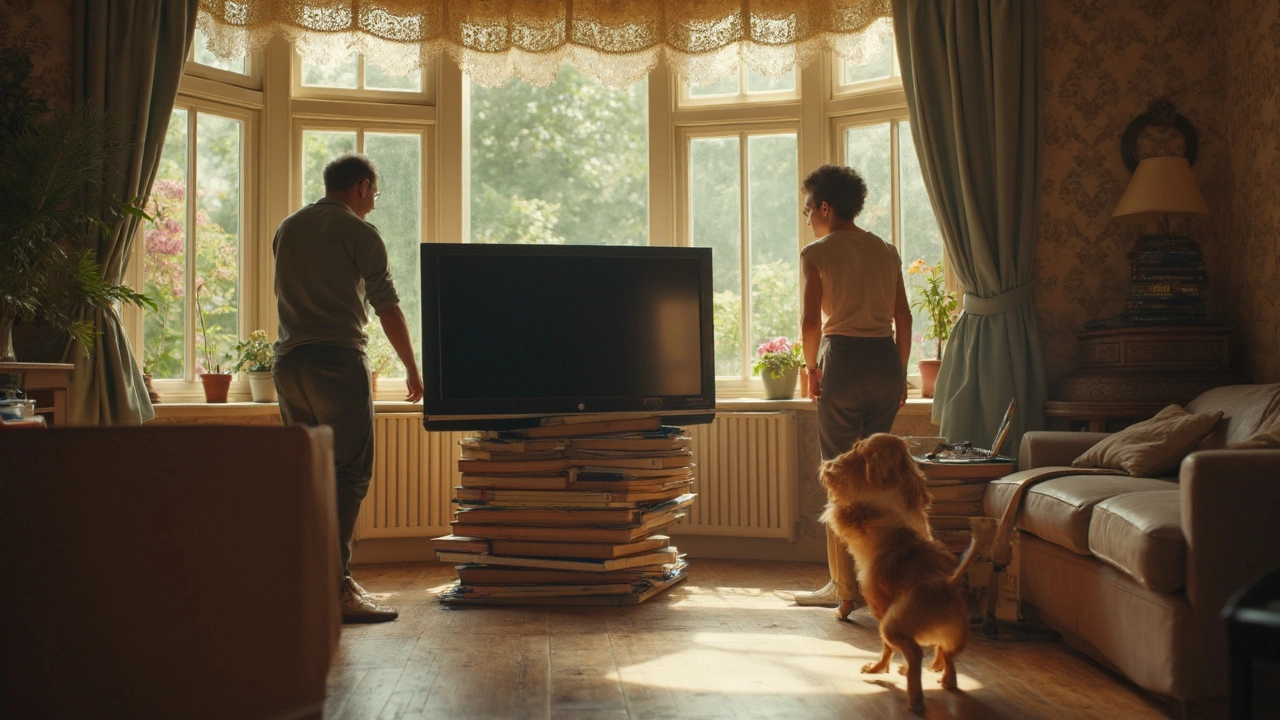TV Support Guide: How to Place, Size, and Mount Your TV Right
Did you know most folks sit way too close to their screen? That can strain eyes and ruin movie night. Luckily, fixing it is simple – just follow a few easy steps.
Choosing the Right TV Stand
First, measure your TV. A 55‑inch screen typically needs a stand at least 48 inches wide, leaving a couple of inches on each side for cables and décor. If you love a sleek look, go for a stand that matches the TV’s width or is just a bit narrower; a wider stand can look bulky.
Next, think about height. The best eye‑level height is when the screen’s middle sits about 42‑48 inches from the floor. This keeps neck strain low whether you’re on a sofa or a chair. Many stands come with adjustable shelves, so you can raise or lower the TV to hit that sweet spot.
Material matters too. Solid wood or metal frames give sturdiness, while glass tops look modern but need extra care. If you have kids or pets, pick a stand with a weighted base – it’ll stay put even if a curious cat jumps up.
Safe TV Placement and Mounting
When it comes to mounting, avoid the ceiling and the top of a bookcase. Bad spots can stress the mount and make viewing awkward. Aim for a wall at eye level and leave at least 2‑inches of clearance around the TV for ventilation.
Use a stud finder to locate wall studs – the TV’s weight should rest on wood, not drywall alone. A 65‑inch TV usually needs at least two studs for secure anchoring. If you can’t find studs, a heavy‑duty wall anchor kit can work, but double‑check the weight rating.
Don’t forget cable management. Bundle cords with zip ties and run them behind a cord cover or inside the wall for a clean look. This not only looks nicer but also cuts the risk of tripping.
Finally, check the sofa‑to‑TV distance. A good rule of thumb is 1.5 to 2.5 times the screen’s diagonal. For a 55‑inch TV, aim for 7‑11 feet away. Sit closer if you love detailed gaming, but stay within that range to keep image clarity and avoid eye strain.
By measuring, choosing the right stand, and mounting safely, you’ll get a comfortable, stylish setup that lasts. No more awkward neck tilts, no wobbling screens, and you’ll enjoy every show like it’s meant to be seen.
Lost Your TV Legs? Quick Fixes and Smart Solutions for Wobbly Screens
Misplaced the legs to your TV? You're not alone. These awkward-shaped plastic parts vanish at the worst times, leaving you with a screen and nowhere safe to put it. This guide covers practical ways to support your TV, from homemade fixes to finding the exact manufacturer part. Plus, you'll get tips to avoid future hassle and keep your TV setup safe for everyone in the house.
More
